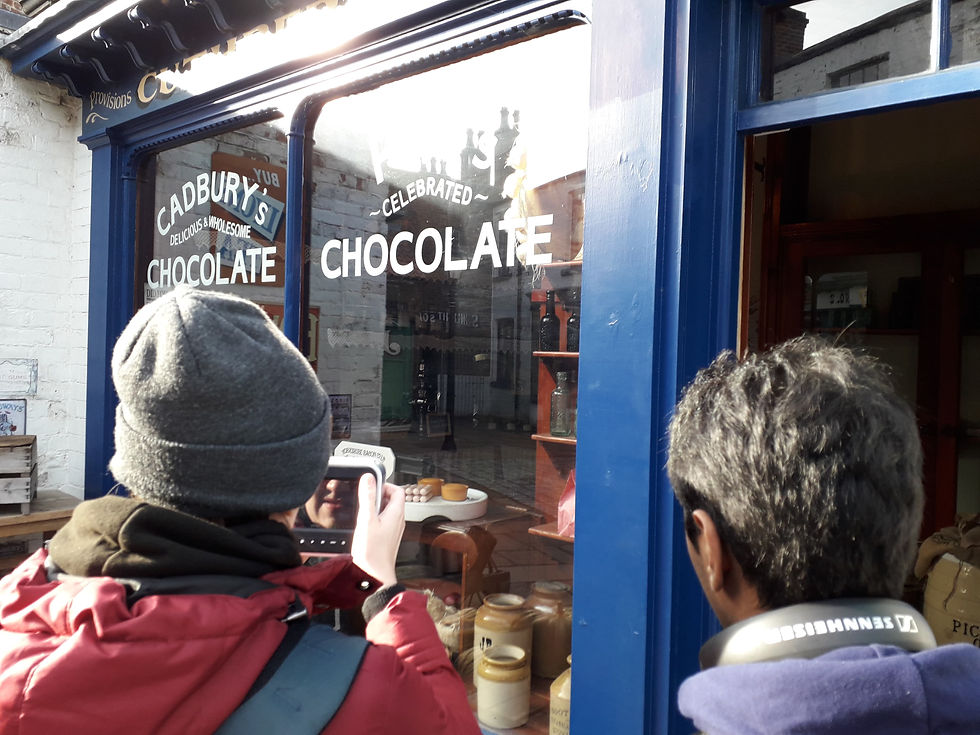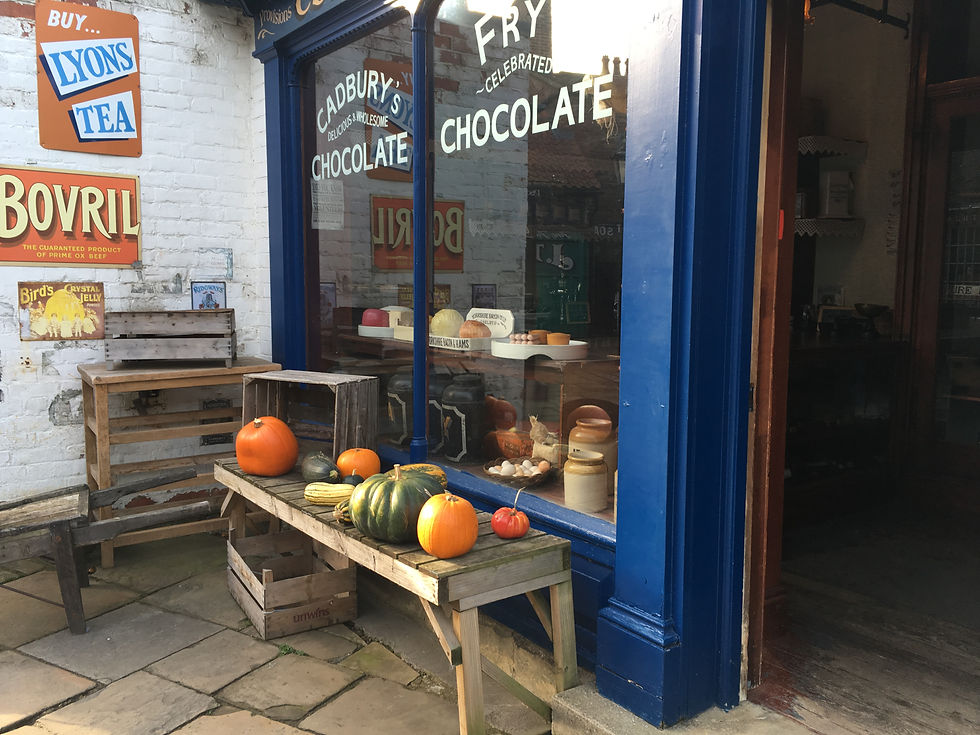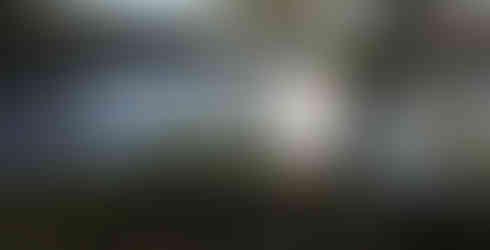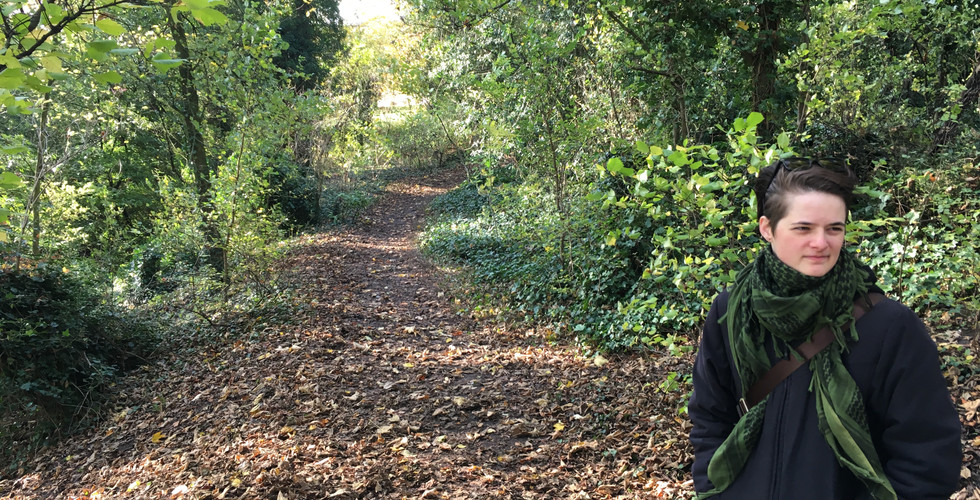Location Scouting: How to Investigate a Film Location
- sveahartle
- Nov 4, 2018
- 6 min read
As part of our pre-production process, both 16mm film groups I am a part of needed to go location scouting. And as both groups decided to investigate Preston Park, its Museum and the Victorian Street located there, we set about to do a proper location scout today.

Already in preparation of today, I set down and researched what I would be needed to accomplish in both my roles as producer for Lynley’s ACTION! and my role as cinematographer in my Sweeney Todd idea.
As the Producer
In my role as the producer, I planned the location recce and transport to and from Preston Park in tandem with Chloe (the producer of Sweeney Todd) and budgeted the transport and entrance costs for all five crewmembers. I then booked out the equipment for the location recce on Friday and took care that the equipment was complete, charged and in full working condition.
As the Cinematographer
In my role as the cinematographer, I was more tasked with the question of how to do a location scout properly and effectively. Obtaining meaningful and helpful visual material was only one of the many concerns that I had. Since I did not want to make a trip down to Preston Park just to realise that I took unhelpful footage or forgot to properly scout the location and would need to return at a later date, I decided to research the proper way of location scouting and pulled up a couple of videos from the Youtube-versity.

How to Do a Proper Location Scouting
Within the many How to-options on Youtube, I found six videos that gave helpful tips on how to approach location scouting from a professional point of view. Two videos particularly stood out that went in depth into the subject matter despite being short.
BBC Academy Production: How to do a recce
Since the image the camera sees is different to the image of our eyes, the BBC Production Academy advised to properly roam a location with the camera in hand and looking at the location through the camera’s image. While your own eyes might give you a hint of what part of the location could be used, the video still advises to check whether this image also pops out on the two dimensional frame. This also allows you to immediately know how and where to set up the tripod and camera and thus saves you valuable time on the actual day of filming.
Another important advice, although not sensible in every location and at any time of the year, was to unload the equipment to allow you to move about efficiently but in due time, without being exhausted and/or weighted down by all the equipment.
Lastly, the video advises to politely ask anyone in charge in advance if you need anything moved or relocated within the location. It not only shows proper manners, it also goes to demonstrate to your hosts that you are considerate of the location you have been allowed to film in and may go a long way to helping you in future productions.
StudioBinder: 8 Keys to Location Scouting Like a Pro
In addition to the video above, this one was also a condense and helpful addition. The makers of this video advise you to look out for eight different elements when doing location recces. These (in order of the video) were:
Unwanted background noise
Anachronisms
Enough space for cast and crew
Access to power sources
Knowledge of the weather
Considering sunrise or sunset (whatever applicable)
Permission to access power sources and
Having all in writing.
Further Tips!
Further tips that I have gathered during my online research was to not only film the relevant location to get a feel for the location on film, but also to take a lot of photos for your art department, marketing purposes and as a quick, visual go-to reference in documentation.
Another really useful advice was to take footage on a professional camera at about the same time you plan to film on location to get the most authentic representation of what the image, the exposure, the mood, and the location itself will look like in the final piece.
Finally, apart from cruising around and exploring locations on the go, further sources recommended to use various (and even unusual) search engines on the internet, such as Google, location websites such as AirBnB, and even Craigslist. Finally, I wrote down a small checklist for myself to remember the most important elements to look out for when in the field.

Putting Theory into Practice
With all the tips at the back of my mind, I was able to take the following images of locations for both ACTION! and The Vegan Solution, when we entered Preston Park today.
ACTION!
At first, we looked out for a proper location for Lynley’s ACTION! ad. After roaming about for approx. one hour, we collected a couple of befitting locations on the grounds of Preston Park.
Finally, in a grove with an overturned tree next to an incline, we found the perfect spot. As you can see in the video that I took with my iPhone, it not offers for a rich scenery with a lot of greenery, visual depth and variety due to the incline, it also offers enough light and space for cast and crew to move and work effectively. It furthermore was not far away from the entrance of Preston Park, which will help with transportation on the day of production.
While I am not the cinematographer of Lynley’s ad, I decided to take this video as a visual aid for me to get the risk assessments right. For the incline and the ground themselves might put a tripping hazard due to stones, leaves, roots and drainpipes, I will have to account for that in the risk assessment and not only make sure that cast and crew are informed of them, but also to clear the area of any tripping hazard that can be easily moved by me on the morning of the actual production.
The Vegan Solution
With the Blackmagic Cinema Camera and a 14mm Samyang lens, we then entered the Museum parts of Preston Park that contain the Victorian Street. With 14mm focal length, 25fps and a shutter angle of 180° on a sunny day, I was able to capture a good amount of clips with a wide variety of locations to choose from. While part of the imagery was still overexposed (especially the sky), I was able to find a good middle ground in the rest of the image that would give an authentic representation of what the location would look like on film.

Finally, we found an empty mock Chocolate shop that contained everything that my script demanded of the location, down to the nitty-gritty. If we were to get this location, we would not only have a fully equipped shop that could easily be dressed into a pie shop, it would also come with a Victorian style register, a counter, a window and an open/closed sign exactly at the right spots and in the perfect relation to each other.

After roaming about for a bit more and finally settling for this location, I returned to the mock Chocolate shop and completed my quick checklist to ensure that I wasn’t missing anything crucial about the place. As you can see in the image of my documentation below, the location would not only come with one power circuit, I also detected several anachronisms to take into consideration (aka be aware of) when filming, such as a fire alarm, wires and non-contemporary posters in the background as well as a LED-light.
After a successful day of location scouting, we finally left not only with a feeling of accomplishment, but also with contact details for the person in charge of filming permissions, provided by an extremely helpful museum’s guide, and five tickets for Preston Park valid for an entire year starting today. The only thing left to do is to save and edit the location recces in post and to add them in here as an update.
Update (as of 26 November 2018)
The location recce has finally been saved and edited! Here is a glimpse into what we have scouted in Preston Park:
References:
Aputure (2017) 8 Film and TV Location Scout and Management Tips! [online] https://www.youtube.com/watch?v=5wYeky964PY&list=WL&index=165&frags=pl%2Cwn [Accessed on 3 November 2018]
BBC Academy Production (2011) How to do a recce [online] https://www.youtube.com/watch?v=pb9uy8tgC9M&index=166&list=WL&frags=pl%2Cwn [Accessed on 3 November 2018]
Film Riot (2015) Mondays: No Budget Location Scouting & Not Being a One Man Band [online] https://bit.ly/2D16UA3 [Accessed on 3 November 2018]
Solemnfilms (2014) Shooting a Film – Location Scouting [online] https://www.youtube.com/watch?v=VRnZ4vVZeJw&index=164&list=WL&t=0s&frags=pl%2Cwn [Accessed on 3 November 2018]
StudioBinder (2017) 8 Keys to Location Scouting Like a Pro [online] https://www.youtube.com/watch?v=wr-7PwdMaWk&index=164&list=WL&frags=pl%2Cwn [Accessed on 3 November 2018]
YCImaging (2017) How to Find EPIC Shoot Locations (Scouting Tips) [online] https://www.youtube.com/watch?v=vUm3RGh0_04&index=165&list=WL&frags=pl%2Cwn [Accessed on 3 November 2018]
























Comments